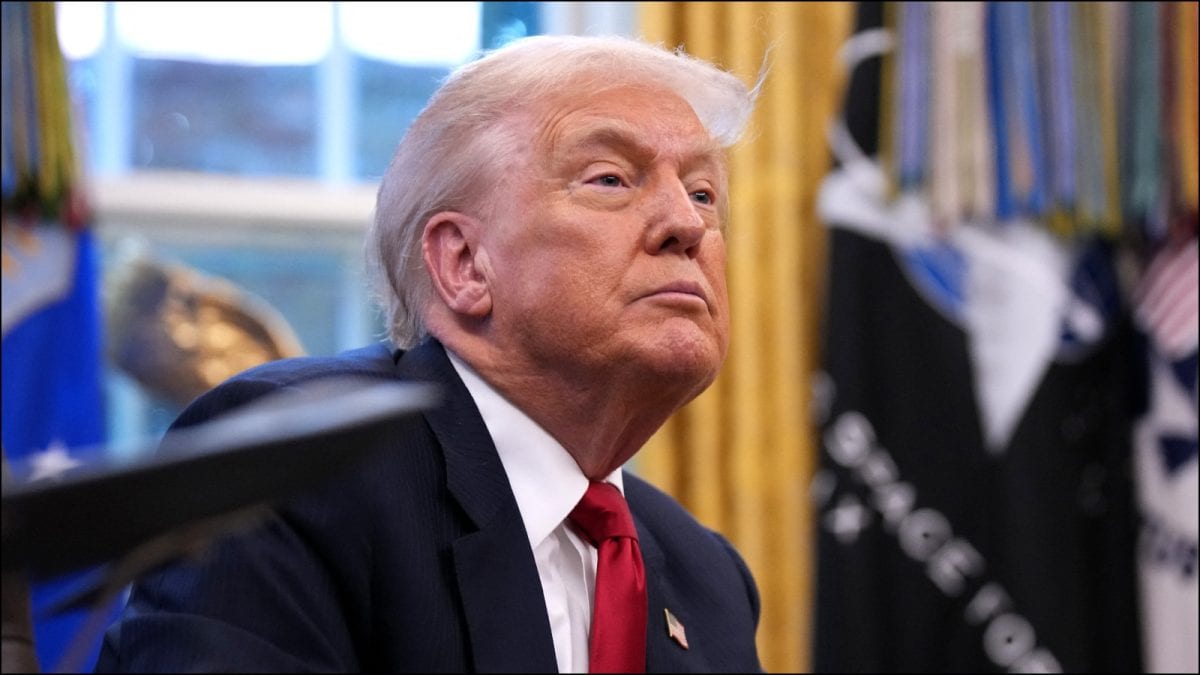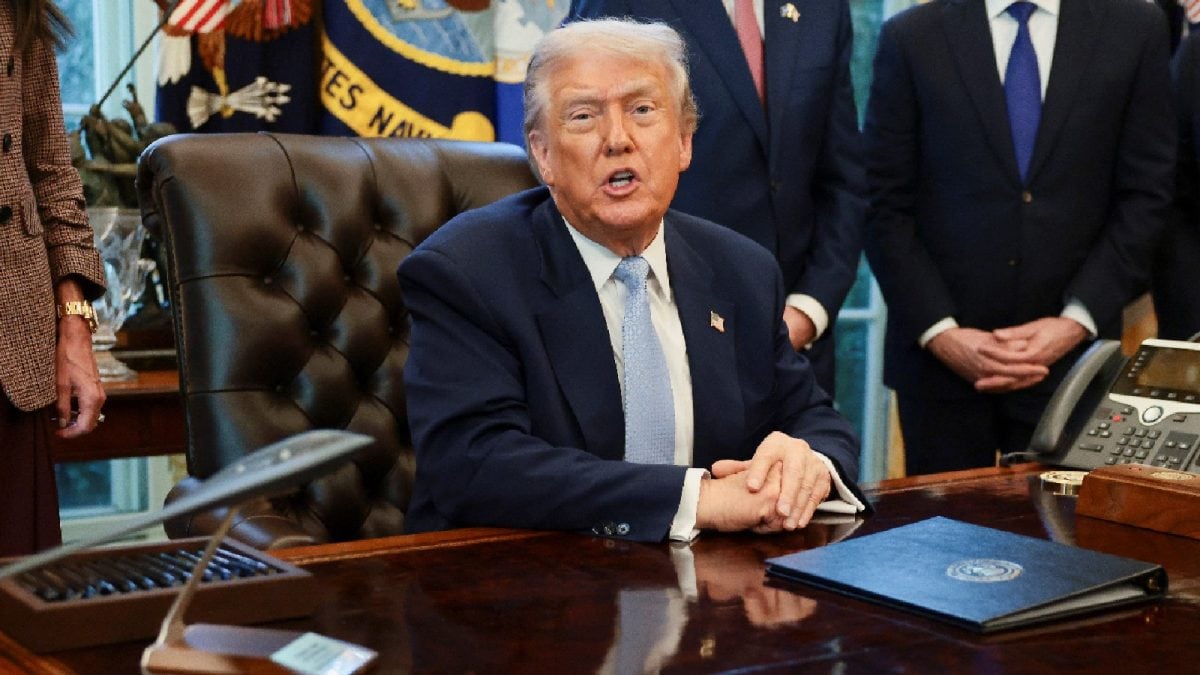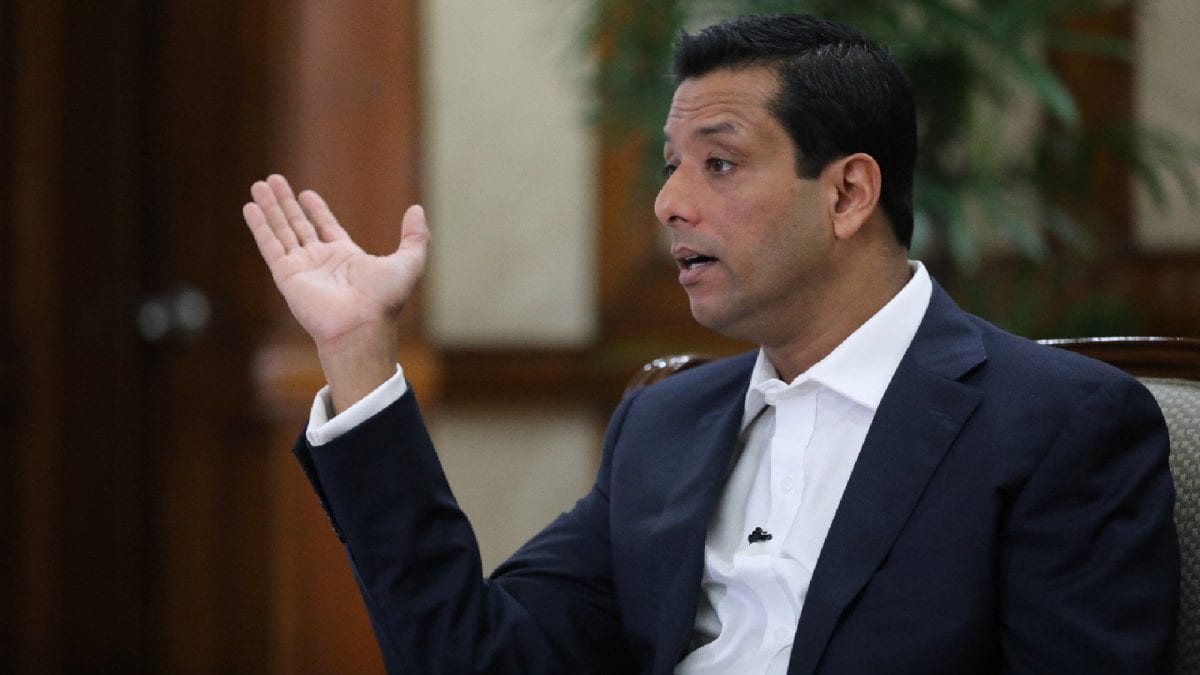Last Updated:October 18, 2025, 08:45 IST
As the US shutdown nears the end of its third week, the judiciary is the next to be hit. Here's how America's top court plans to function without funding

The US Supreme Court is about to run out of money, and federal courts across the country are close behind. (REUTERS)
The United States government shutdown has already triggered widespread disruptions, from frozen paychecks to stalled services. But now, the financial paralysis is knocking on the doors of the highest court in the land. The US Supreme Court is about to run out of money, and federal courts across the country are close behind.
As the political gridlock stretched into its 17th day, the judiciary, an institution constitutionally designed to function independently, is being forced to brace for impact.
The situation is no longer hypothetical. According to Patricia McCabe, the public information officer for the Supreme Court, “The Supreme Court expects to run out of funding on October 18." She told The Hill that once that happens, the iconic building will be “closed to the public until further notice," even though “the building will remain open for official business."
The move signals a significant escalation of the crisis, one that is now not just administrative but constitutional.
What Will The Supreme Court Do When The Money Runs Out?
Despite the impending freeze, the court does not plan to go quiet. As McCabe explained to The Hill, “The Supreme Court will continue to conduct essential work such as hearing oral arguments, issuing orders and opinions, processing case filings, and providing police and building support needed for those operations."
These activities are being categorised as essential functions under federal law, which allows certain operations to continue even during a funding lapse.
In other words, the business of justice will continue at the top, but only the bare minimum. Tours will stop, public access will be barred, and the administrative wheels that keep the Supreme Court functioning smoothly will slow down dramatically. The justices themselves, however, will not stop working.
Why Does A Shutdown Affect The Judiciary At All? Isn’t It Independent?
This is where the complexity of the US system comes into play. Although the judiciary is independent in terms of decision-making, its functioning, like most arms of the federal government, is still dependent on Congressional appropriations. Every year, Congress must pass funding bills that allocate money to federal agencies, including the courts. If it fails to do so, either fully or partially, the result is a government shutdown.
This current shutdown began on October 1, as Democrats and Republicans failed to agree on a new spending bill. Democrats have repeatedly blocked the House GOP proposal, primarily because it does not extend healthcare subsidies under the Affordable Care Act, which are set to expire at the end of the year. With no agreement in sight, various government branches, including the judiciary, are being forced to find ways to keep functioning without money.
What Happens To Federal Courts Across The US?
While the Supreme Court will run out of funding by October 18, the rest of the federal judiciary is expected to hit that wall by October 20.
The Administrative Office of the US Courts said in a statement that federal courts are likely to exhaust their remaining funds by Monday. Once that happens, they will no longer be able to maintain “full, paid operation".
Judges, however, are not going anywhere. As the office clarified, “Federal judges will continue to serve, in accordance with the Constitution, but court staff may only perform certain excepted activities permitted under the Anti-Deficiency Act." This 19th-century law prohibits federal agencies from incurring obligations in excess of appropriated funds, with exceptions only for activities deemed essential.
Those “excepted" activities include tasks necessary to perform constitutional functions, ensure the safety of human life, and protect property. All other operations will be put on hold. Crucially, “this and all other excepted work is to be performed without pay," the statement added. Staff members not performing excepted duties will be placed on furlough.
Will Court Cases Be Delayed Or Cancelled?
That depends on the district. According to The Hill, how each court proceeds from Monday will vary across the 94 federal judicial districts in the United States. While some cases will be allowed to continue on schedule, others will likely be postponed. Staffing resources, or the lack thereof, will also be a deciding factor.
Federal courts will still be able to carry out some limited functions using leftover court fee balances and non-appropriated funds, but these will not last long. The Administrative Office noted that any such limited operations would likely be conducted over the weekend, just before the funding dries up.
Public electronic systems, such as the Public Access to Court Electronic Records (PACER), will remain online, allowing filings to continue for now. Jury programmes will also continue operating, and jurors are expected to follow court instructions as directed.
Is This Shutdown Really That Historic?
Yes, and it’s getting worse. The ongoing shutdown has now reached 17 days, making it the third-longest in US history. If it stretches to Monday, it will surpass the 1978 shutdown under President Jimmy Carter. If it continues until October 22, it will surpass the 1995 standoff between House Speaker Newt Gingrich and President Bill Clinton, which lasted 21 days.
The longest shutdown in US history occurred between December 22, 2018, and January 25, 2019, during President Donald Trump’s first term. That one lasted 35 days and ended only after Trump dropped his demand for border wall funding in exchange for reopening the government.
Will The Shutdown End Soon?
The short answer: not much, at least not yet. The House has been out of session since September 19 and has no plans to return until the shutdown is resolved. House Speaker Mike Johnson has cancelled votes repeatedly since late September.
Senate Majority Leader John Thune has said the Senate will reconvene on Monday, October 20. A vote is expected later that day on a new funding measure. If passed, the government shutdown could end once the bill is signed by President Trump. But if it fails, the crisis will drag on into its third full week.
In the meantime, Thune is also expected to bring up a bill to ensure that “excepted" federal workers, including court staff and military personnel, will receive pay during the shutdown. “These are not employees that you want to go home," said Republican Representative Mike Rogers of Alabama, referring specifically to workers at the agency responsible for the US nuclear arsenal, which is planning to furlough 80 per cent of its staff due to the funding shortfall.
So, How Bad Can It Get For The Courts?
Very bad, if the shutdown continues past Monday. Courts will still be expected to perform their constitutional duties, but the machinery supporting them — clerks, administrative staff, security, maintenance — will be functioning under severe constraints. While judges are constitutionally mandated to remain on the bench, the rest of the judiciary will be operating in legal triage mode.

Karishma Jain, Chief Sub Editor at News18.com, writes and edits opinion pieces on a variety of subjects, including Indian politics and policy, culture and the arts, technology and social change. Follow her @kar...Read More
Karishma Jain, Chief Sub Editor at News18.com, writes and edits opinion pieces on a variety of subjects, including Indian politics and policy, culture and the arts, technology and social change. Follow her @kar...
Read More
First Published:
October 18, 2025, 08:45 IST
News explainers Government Shutdown Crisis Deepens: US Supreme Court To Run Out Of Money, Here’s What It Means
Disclaimer: Comments reflect users’ views, not News18’s. Please keep discussions respectful and constructive. Abusive, defamatory, or illegal comments will be removed. News18 may disable any comment at its discretion. By posting, you agree to our Terms of Use and Privacy Policy.
Read More

 1 month ago
1 month ago
















